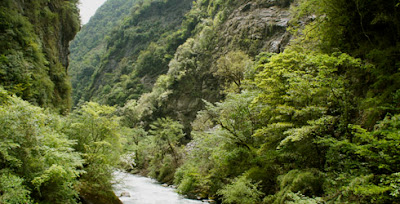 |
| Bill Weber https://environment.yale.edu/profile/albert-weber/ |
Although our class
focuses on a specific region, I believe that it is important to remember that
the Adirondack Park does not exist in a vacuum. Moreover, there are many
aspects of the Adirondack Park that can be directly applied to places on the
opposite side of the world (i.e. China). Bill Weber, author of The Great Experiment in Conservation: Voices
from the Adirondack Park, argues that the Adirondack Park can be a model
for global conservation. In his interview about Rwanda’s conservation approach with
graduate student, Lee Gross, Weber gives valuable insight on conservation and
the importance of governance. Even though this interview was about Rwanda and
not China, I believe that China could also benefit from looking to the
Adirondack Park as a model for conservation.
In his
aforementioned book, Weber states, “If there is a single lesson…to learn from
the Adirondacks it is the role of the private sector in assuring a more
diversified economic base, with a greater percentage of benefits staying in
local hands within the regional economy”(1). This significance of the private
sector is evident in China’s recent conservation efforts. In 2010, The Nature
Conservancy, an American charitable organization, partnered with the Chinese
government to create a new model of conservation: land trust reserves (2). Together,
they acquired 27,000 acres of land in Sichuan Province (a critical habitat of
the giant panda) and lawfully gave the land an elevated, protected status.
Under the land trust reserve model (that involves purchasing leases of land), the
Conservancy obtained powerful control over the management of the land in the
new reserve that compared starkly with previously created nature reservations
in China (2).
 |
| Sichuan Province Land Trust Reserve www.nature.org |
In the interview, Weber
asserts that good community relations are critical to successful conservation
because “there is a need to compensate those who bear the costs of
conservation, most often local communities”(1). He commends the WCS Adirondack
Program as a good example of local community representation. In addition to the
Adirondack Park Agency (that implements a top-down system), Weber argues that
the WCS Adirondack Program is important to the goals of conservation and
governance of the park. Yet I wonder if this local representation is achievable
in communist China. China has about 1.4 billion people. Therefore, does the
Chinese government have the time and national incentive to listen to the local
communities affected by the creation of new land trust reserves? The consequence
of the Three Gorges Dam – a project that displaced 1.2 million people –
reflects an indifferent Chinese government. However, the power of the private
sector, such as the Nature Conservancy, gives me hope that such community relations
are possible in the future.
Despite the
difference in scale of the Sichuan Province Land Trust Reserve and the
Adirondack Park, I think that conservationists should draw parallels between
the two and develop their global perspectives on conservation. Undoubtedly, China
would benefit from importing conservation models from the U.S. Although the two
countries have conspicuous differences, models are malleable and, therefore, Chinese
conservationists can still learn from the governance of the Adirondack Park. As
Weber concludes, “the question isn’t what works and how can we copy this
functioning model, but what we learn from what we do.” In other words, no one
model is perfect and will be suitable for every place. However,
conservationists can always learn from one another because they share common
goals.
Sources:
2 2) http://www.nature.org/ourinitiatives/regions/asiaandthepacific/china/placesweprotect/china-sichuan-province-land-trust-reserve.xml
I think that this is an extremely well written and organized post. I think you do an extremely good job developing an argument and systematically backing it up. It is interesting to think about how the Adirondack conservation model differs from even other conservation models within the US. It would be interesting to further study the differences between all the different conservation routes that are taken.
ReplyDelete